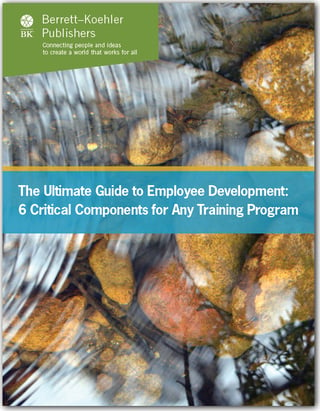Looking at the Facts
A study led by an MIT researcher found that workforces split evenly along gender lines increased revenue by about 41 percent and improved office satisfaction, morale, and cooperation. The study also reported that more socially diverse workforces had greater collective knowledge that allowed them to perform more efficiently. The reason? Researchers used a baseball analogy: A team comprised of all catchers would have many talent gaps. Leaders who genuinely embrace new perspectives and cultural backgrounds in their corporate cultures—and reflect that in their leadership style—are more likely to realize the benefits of workplace diversity, including growth, innovation, and happier employees. In her book We Can’t Talk about That at Work!, diversity pioneer Mary-Frances Winters writes that diversity training programs can help managers address controversial, polarizing issues that are often difficult to discuss. Meanwhile, diversity also brings the added benefit of creativity and innovation by encouraging employees to work side-by-side with those who have different worldviews, backgrounds, and experiences. Finally, diversity gets results by building a broad collection of skill sets among employees.
Recognize Your Biases
Everyone is biased. Effective diversity and inclusion training programs must recognize and accept that reality. However, it’s equally important to recognize that our biases cannot be fixed if we can’t recognize them. Biases aren’t always rooted in hatred, racism, or misogyny. Rather, they’re rooted in our limited worldviews and experiences.
Michael Landers, founder and president of global consulting company Culture Crossing, Inc., illustrates in his book Culture Crossing how “our minds are hardwired to jump to the conclusion that others’ values and beliefs—and the meaning behind their behaviors—are the same as our own.” Landers adds that it is possible to override our “hardwiring” and to build a new, more culturally responsive navigation system. Working toward that end should be the aim of diversity and inclusion training programs.
So, how do you retrain your brain to navigate cross-cultural interactions? By familiarizing yourself with the many ways that cultural programming influences your behavior. This requires leaders to help unpack what Landers refers to as “cultural baggage,” or the values that shape our perceptions, actions, and reactions. Identifying and challenging these core philosophies can help unify company cultures, and Landers uses the example of proverbs to help illustrate this point.
For example, consider the proverb “A rolling stone gathers no moss,” which is used in both American and Japanese culture. In the U.S., it warns against remaining idle. “From the U.S. perspective, the moss symbolizes stagnation and deterioration,” says Landers. In Japan, however, moss is viewed as a plant that adds beauty to buildings and gardens as they age. “Here, the moss symbolizes the virtues of being patient, and how the value and beauty of something (or someone) can grow with age,” says Landers. The difference in the way this proverb is interpreted underscores the importance of the difference in cultural ideologies. In Japan, patience is valued as an essential part of success; in the United States, perpetual action is advocated.
Knowing how to recognize and address personal and cultural biases in a non- threatening, disarming manner is paramount to successful diversity and inclusion training programs. With practice and knowledge, it’s possible to rein in automatic responses and expand training programs to include different interpretations of what people say and do and adjust reactions accordingly.
Know How to Talk About Diversity
Sometimes saying nothing at all speaks volumes. For managers and supervisors living in the modern era of 24-hour news cycles and political polarization, not taking a stance on hot-button issues can send the wrong message to employees. The message is that leadership doesn’t care about issues related to diversity and inclusion that deeply impact their employees on a personal level.
According to Mary-Frances Winters, president and founder of the Winters Group and a thought leader on diversity and inclusion in the workforce, there has been an “increased an intensified global polarization on many topics related to our differences.” She claims that this has sparked a wave of “us-and-them” disunity, manifesting in “heightened racism, xenophobia, Islamophobia, classism, and homophobia.”
As her research shows, employees who are impacted—either directly or indirectly—by these events are looking for their companies to say something. It’s important to remember that organizations do not operate in a bubble. What happens in the external world has a direct impact on employees, and they are going to talk about it at work whether you like it or not. In the context of training programs, it’s important to keep this top-of-mind.
Create Mentoring Programs
Authors Kathryn Heath, Jill Flynn, Mary Davis Holt, and Diana Faison tackle an important question in their book, The Influence Effect. Studies indicate that men are promoted and paid more than female colleagues who have the same education, experience, and number of mentorships. Why? In their study, the authors found that “women are ‘over- mentored, and under-sponsored’.” Mentors serve as coaches, guides, and educators. Sponsors, meanwhile, provide connections and toeholds to higher positions within an organization. Simply put: The men in the study had more sponsors. So, how can a mentorship program effectively cultivate sponsors? The answer is through meaningful, personal connections.
Like any relationship, the mentor-mentee relationship is one that needs to be nurtured. Trying to force the issue through a rigid program might not achieve desired results. In fact, a review by Regent University of minority women leaders who took part in mentorship programs found that flexibility and personal connection were among the most important factors. “Formal programs, which can provide a more structured focus on mentoring, while beneficial, were viewed as time-consuming, process driven, and in some cases, less effective than informal mentoring,” the study states.
Whether formal or informal, mentorship programs build human connections, which ultimately hold the greatest potential to truly change hearts and minds. The issue cannot be controlled through heavy-handed tactics like mandatory trainings or performance metrics. In fact, Frank Dobbin and Alexandra Kalev write in the Harvard Business Review that “a number of companies have gotten consistently positive results with tactics that don’t focus on control. They apply three basic principles: engage managers in solving the problem, expose them to people from different groups, and encourage social accountability for change.”


